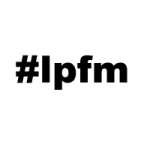 As of this writing, there are 39 more shopping days until the Federal Communications Commission’s application window for Low Power FM licenses begins on October 15. It will remain open for two weeks and close on October 29. I’m getting worried queries from various people. Are organizations ready for this opportunity? Will enough groups apply?
As of this writing, there are 39 more shopping days until the Federal Communications Commission’s application window for Low Power FM licenses begins on October 15. It will remain open for two weeks and close on October 29. I’m getting worried queries from various people. Are organizations ready for this opportunity? Will enough groups apply?
Then there’s the Let the Cities In petition to the FCC, which asks for a second LPFM filing window that will allow for ten watt (LP-10) station applications. The current watt level is LP-100, which LTCI complains will effectively exclude too many ethnically diverse radio license dense urban areas in the United States.
So I polled various LPFM experts on the possibility of a second window. They all agreed—do not count on it.
Common Frequency’s Todd Urick was quick to respond to my query. “FCC’s cycles are more like a decade long nowadays. Maybe five years?” Urick observed. “All the channels in the urban areas should be long gone by then. They’ll mostly be all gone at the close of this window. Best someone applies now.”
Ditto, said Sanjay Jolly, Policy Director for the Prometheus Radio Project: “I think it is very unlikely we would see a second LPFM window in the coming years. I am confident that the Commission would resist any such proposal, partly because to facilitate a filing is not a small undertaking.”
“In general, Prometheus welcomes any effort to expand the public’s access to the airwaves,” Jolly added. But:
“if very few groups apply during the October 15-29 window (which I doubt will happen), we would have to examine why. If there simply wasn’t substantial demand, the Commission would seem to have little reason to push a new LPFM window any time soon. If, however, there were some barrier preventing eager applicants from participating next month – misinformation or lack of information, insufficient time, technical errors, etc. – then I think there could be a strong case for pushing the FCC for another window. I don’t necessarily see things playing out this way, but I also wouldn’t call it impossible.”
The most detailed response came from Michi Eyre of REC Networks, who is skeptical of LP-10 stations, but thinks LP-50s could work. “Myself, I would like to see what happens with the October window,” Eyre explained, “and then quantify the opportunities that are available and then make another attempt to move forward the LP-50 service that I originally proposed during the recent rulemaking proceedings.”
But despite REC’s LP-50 request, she did not hold out much hope for a second window. “I seriously doubt it,” Eyre noted. “The FCC is already talking about another translator filing window after LPFM.”
Eyre says the FCC needs to place further restrictions on translators, FM signal extension towers that compete with LPFM stations for licenses. I’ve excerpted the rest of her email to me below, but the bottom line is pretty obvious. This filing window is probably going to be the last opportunity to grab a Low Power FM license for a very long time. To slightly rephrase Todd Urick’s advice: best you apply now.
Here is what Eyre wrote to us about translators:
I would also like us to focus on translators, the nature of their operation, their location or their ownership. While the FCC has been focusing for many years on commercial radio stations, they have let non-commercial full power stations and FM translators sit on the backburner. As a result, there have been abuses in both services. The changes that I would like to see to the translator services include:
– A national limit on ownership of translators, freezing existing owners over a specific number of translators from acquiring new translators and once they drop a translator over their limit, they can not make it back.
– Criteria for the placement of translators where xx% of the service contour overlaps an urbanized area or that the overlap area is already served by xx FM services or criteria where the translator is being placed within 39 meters of a Top-100 market grid.
– A prohibition of analog translators that receive their primary station by space from rebroadcasting a signal other than their primary station’s analog signal (in other words, HD-2).
– For translators requesting power levels that exceed 74.1235(b)(1) under the exception for “fill in” service for FM services, they must also make a showing that a significant portion of the area served by the “fill in” translator is an area that physically can’t receive the primary station despite being within the service contour.
– Eliminate the second adjacent channel protection requirement in 73.807 for LPFM to translators. Translators are not required to protect LPFM second adjacent. In addition, Section 7(b)(3)(1) of the Local Community Radio Act only requires the FCC to not reduce protections between LPFM and “full service” (full power) FM stations.
I feel that if people do not participate in the upcoming window, then this just opens up more opportunities for translators in the future but at the same time, I hope the FCC continues to follow the LCRA [Local Community Radio Act] (which will continue to be law after the window) and assure that there is a balance of services in compliance with Section 5 of the LCRA.


